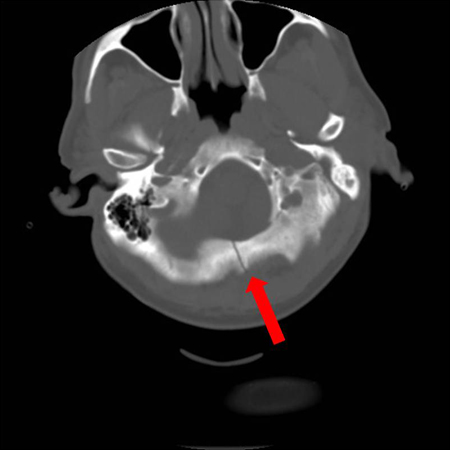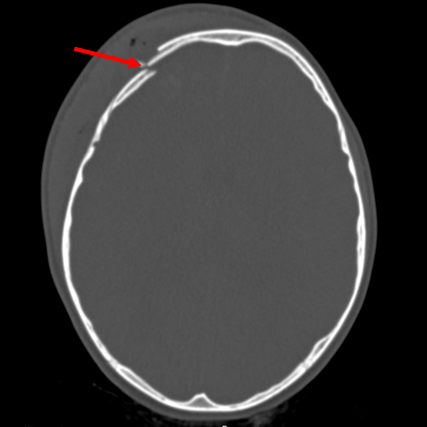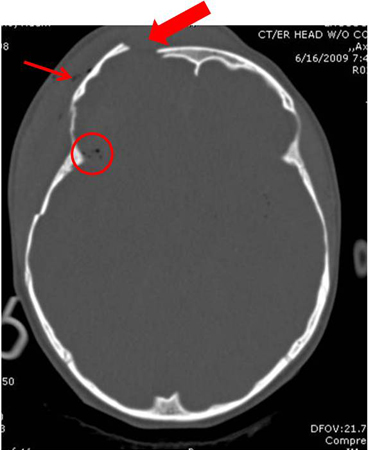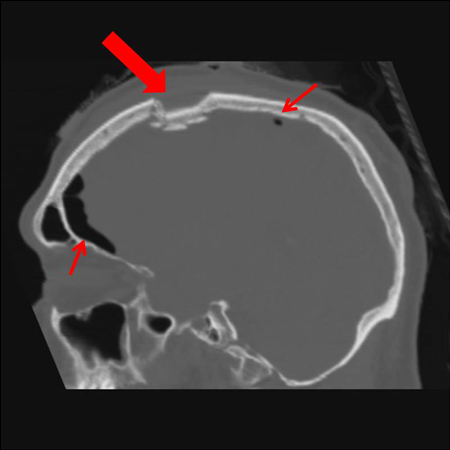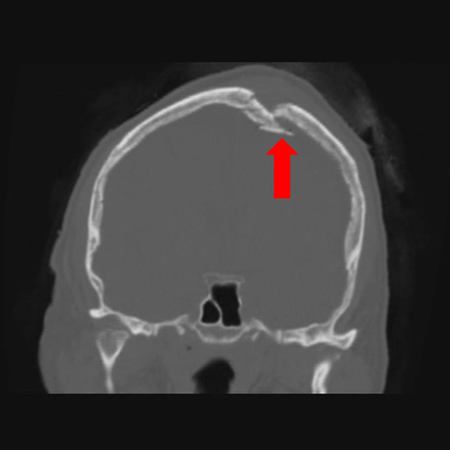Resumo
Definição
Anamnesis y examen
Principales factores de diagnóstico
- presença de fatores de risco
- fratura aberta
- discrepância palpável no contorno do osso
- sinal de Battle
- equimose periorbital
- otorreia sanguinolenta
- rinorreia liquórica
- paralisia facial, nistagmo ou parestesia
Otros factores de diagnóstico
- evidências de trauma
- dor craniana ou cefaleia
- náuseas
- estado mental alterado/perda de consciência
- reflexos pupilares anormais
- perda auditiva
Factores de riesgo
- queda de altura
- acidente com veículo automotor
- agressão resultando em trauma cranioencefálico
- ferimentos por arma de fogo na cabeça
- sexo masculino
Pruebas diagnósticas
Primeras pruebas diagnósticas para solicitar
- TC craniana
Pruebas diagnósticas que deben considerarse
- ensaio da beta-2-transferrina
- ressonância nuclear magnética (RNM) cranioencefálica
- angiografia por ressonância magnética (RM)
- ultrassonografia craniana
- radiografia simples do crânio
- TC de coluna cervical
- radiografia do esqueleto
- angiotomografia
- Angiotomografia venosa
Algoritmo de tratamiento
fratura sem afundamento fechada
fratura com afundamento fechada
fratura aberta
lesão persistente de nervo craniano ou vazamento do liquido cefalorraquidiano (LCR)
Colaboradores
Autores
Demetrios Demetriades, MD, PhD, FACS

Professor of Surgery
Director
Division of Trauma and Surgical Intensive Care
LAC+USC Trauma Center
Keck School of Medicine at USC
University of Southern California
Los Angeles
CA
Divulgaciones
DD declares that he has no competing interests.
Leslie Kobayashi, MD, FACS

Professor of Surgery
Division of Trauma, Surgical Critical Care and Burns
University of California San Diego
San Diego
CA
Divulgaciones
LK declares that she has no competing interests.
Revisores por pares
Prof Sherard Austin Tatum, MD
Professor Otolaryngology and Pediatrics
SUNY Upstate Medical University
Syracuse
New York
Divulgaciones
SAT declares that he has no competing interests.
Tunji Lasoye, FRCS, FCEM, MA, Med Ed
Consultant and Honorary Senior Lecturer in Emergency Medicine
Clinical Lead
Emergency Department
Director of Medical Education
King's College Hospital
London
UK
Divulgaciones
TL declares that he has no competing interests.
Agradecimiento de los revisores por pares
Los temas de BMJ Best Practice se actualizan de forma continua de acuerdo con los desarrollos en la evidencia y en las guías. Los revisores por pares listados aquí han revisado el contenido al menos una vez durante la historia del tema.
Divulgaciones
Las afiliaciones y divulgaciones de los revisores por pares se refieren al momento de la revisión.
Referencias
Artículos principales
Expert Panel on Neurological Imaging: Shih RY, Burns J, et al. ACR Appropriateness Criteria® head trauma: 2021 update. J Am Coll Radiol. 2021 May;18(5S):S13-36.Texto completo Resumen
Artículos de referencia
Una lista completa de las fuentes a las que se hace referencia en este tema está disponible para los usuarios con acceso a todo BMJ Best Practice.

Diferenciales
- Hemorragia intracraniana
- Linhas de sutura em crianças
- Céfalo-hematoma
Más DiferencialesGuías de práctica clínica
- ACR appropriateness criteria: head trauma
- ACR appropriateness criteria: head trauma - child
Más Guías de práctica clínicaInicie sesión o suscríbase para acceder a todo el BMJ Best Practice
El uso de este contenido está sujeto a nuestra cláusula de exención de responsabilidad


